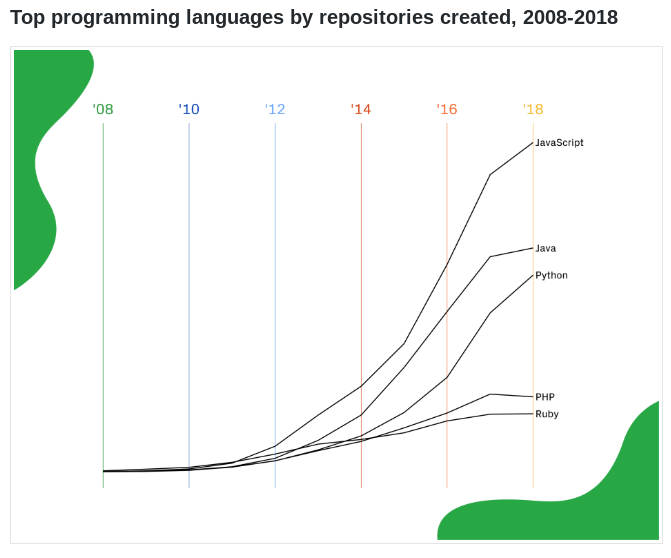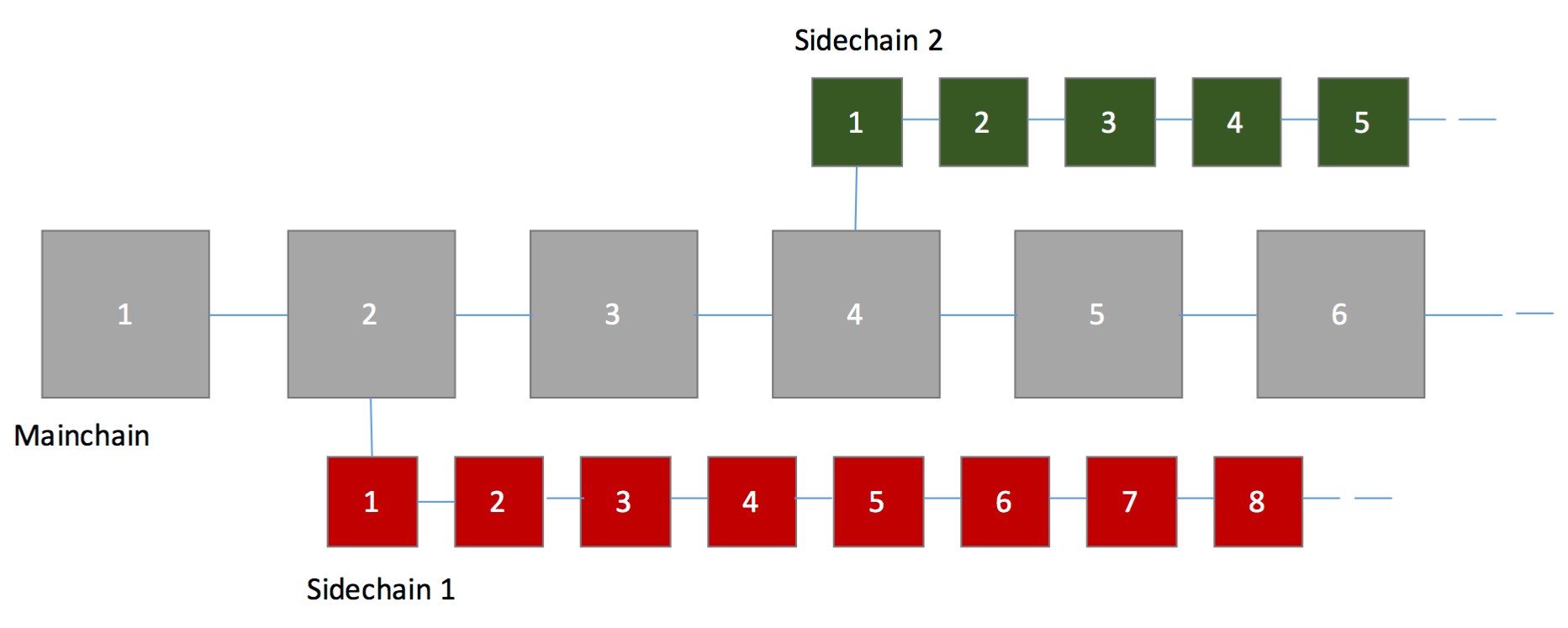Asking whether you should invest in a particular cryptocurrency can only be answered after you’ve decided the cryptocurrency space is worthy of investment. If you’re reading this, I’m assuming we’re on the same page: the bulls will return… eventually.
From here, it’s all about finding projects that are not only worth taking the time to research, but worth spending our hard-earned money on. When the bulls come back, will a majority of the market follow their lead (like the bull run of 2017), or will only a small minority of truly useful projects make it to greener pastures?
The way I see it, it’s best to assume the bulls will be more selective this time around, which means this bear market has given crypto investors the precious gift of time.
Today we’ll be using that time to look at a project worthy of research: Lisk.
What is Lisk?
It’s one thing to build a blockchain-based cryptocurrency to be used for the exchange of goods and services, but another thing entirely to build the blockchain itself that provides a platform for developers to build on top of.
That’s what platform coins do, and it’s no wonder why there are so many available on the market today. They take the blockchain business model to its next logical level. It’s the difference between your local Mom and Pop sandwich shop, and the franchised version it grows into years later.
The difference is scalability.
In short, Lisk is one of many platform coins seeking to serve the broader applications of blockchain technology, as opposed to Bitcoin, which is designed to be a digital currency. Since we’re witnessing the earliest stages of its development, there are multiple companies testing multiple methods, in what seems to be a race toward mass adoption.
The History of Lisk
Lisk was originally named Crypti, and was created in September 2014 in order to provide “a full stack solution for deploying truly decentralized applications onto the blockchain,” according to their Crunchbase profile.
In order to encourage more blockchain developers to participate in the cryptocurrency space, founders Max Kordek and Oliver Beddows created the open-source dapp platform that eventually forked into Lisk.
The team launched their ICO in Q1 2016, selling 100 million of their native tokens, LSK, in exchange for 14,000 BTC, worth about $5.8 million at the time. The amount of LSK sold during the ICO equates to roughly 78% of the current total supply.
Since Lisk’s inception and ICO, their team has steadily made progress on their project, from the implementation of their well-planned roadmap, to their Q1 2018 rebranding.
What Sets Lisk Apart?
There are 3 main distinctions that set Lisk apart from its competitors, 2 of which will be covered in this article (see JavaScript and Dapp Sidechains below). The 3rd differentiator is their use of a Delegated Proof-of-Stake consensus algorithm (DPoS).
To learn more about how Lisk is using DPoS, check out Understanding Lisk: Part 2.
JavaScript
A recent survey by YouGov Omnibus revealed that 79% of Americans have heard about cryptocurrencies. On top of that, according to the 2018 LinkedIn Emerging Jobs Report, the blockchain development job market has seen a 33% growth in the last year.
Lisk is positioning themselves to help the blockchain job market continue to expand by allowing dapp developers to use JavaScript, which has been the most popular programming language for the last 6 years.

It’s worth noting that blockchains can theoretically use whatever programming language they want, and even create their own if they have the resources and requirements to do so. There are plenty of blockchains that use Java, Python, PHP, or Ruby, which are also very popular.
The significance of JavaScript is how much more popular it is than its closest “competitor.”
By offering Java, Lisk is not only targeting the largest pool of developers in the industry to work with their blockchain, they’re also increasing their interoperability with a majority of websites as they currently stand. More simply put, a majority of websites use Javascript, allowing Lisk dapps to easily mesh with most of the internet.
While they aren’t the only blockchain using JavaScript, they are one of the few, and they have the best marketcap of the bunch. If the demand for blockchain developers continues to expand, and the most popular programming language among the pool of developers is JavaScript, Lisk will be a top option when developers are looking for a platform to build dapps with.
All that said, it stands to reason that since JavaScript is so widely used, Lisk would also attract less-talented developers, although this counterpoint will take years to evaluate.
Lisk Software Development Kit (SDK)
In order to make dapp development as easy as possible for blockchain developers, Lisk offers the Lisk App SDK, which they describe on their blog as:
The Lisk App SDK is a framework to deploy your own sidechains and develop blockchain applications on top of them. Everything is written in JavaScript. That means you can develop platform independent social networks, messengers, games, financial applications, prediction markets, exchanges, storage platforms, contract execution platforms, sharing economies, online shops, IoT applications, and much more on your own blockchain, fully decentralized, and without the hassle of complicated consensus protocols or P2P networking algorithms.
The quote above points to another aspect of Lisk that sets it apart from its competition: sidechains.
Dapp Sidechains
As previously mentioned, one of the central reasons for building a blockchain platform is to increase the scalability of blockchain technology.
This requires a platform to handle large amounts of transactions and activity happening constantly on their blockchain, and as we’ve seen with Ethereum, it’s something that needs to be thoroughly planned for.
The CryptoKitties game exposed Ethereum as unready for mass adoption, and the event has served as a reference point for other platform coin teams to study. Lisk is implementing the use of sidechains to allow dapps to be built on their blockchain, without running the risk of a congested network.

The graphic above illustrates the fundamentals of Lisk’s solution to the blockchain scalability issue. The gray section labeled “Mainchain” represents the Lisk blockchain, and the sidechains stemming from blocks 2 and 4 represent the dapps that were deployed by developers with the Lisk App SDK.
This method theoretically allows for infinite scalability, as well as increased security. If anything goes wrong with an application that would normally compromise the mainchain, the issue is quarantined, and Lisk is not required to perform a hard fork.
Also, since each sidechain is independent, each sidechain has the option to either use LSK within their token economics, or create their own native token entirely.
How Will Lisk Accomplish Its Mission?
It’s an important question to ask, and the short answer is with smarts, hard work, and good timing.
Seeing as we’re still in the early stages of blockchain development, and the Lisk team has been in the game for roughly half of its existence, I’d say they’ve shown impeccable timing so far.
Although they haven’t released any working products (the Lisk App SDK) aside from their core products, it is laid out fairly well on their roadmap with indications as to what stage of development each segment is currently in. That said, there are no estimated release dates for the SDK.
Building the Lisk App SDK is proving to be an ambitious task, and it’s no surprise there isn’t a public deadline yet. Regardless, it’s more important to look into who’s building the product, and decide whether they’ll pull it off in a timely manner from there.
A quick note: this article won’t conduct a comprehensive dive into each team member, but rather aims to assess the Lisk team as a single unit. Proper due diligence would require diving into the portfolios of each team member.
The Lisk Team
To get a good idea of whether or not a blockchain project will succeed, consider the team, and the problem they’re aiming to solve, and their solution. The Lisk team has been internally categorized into 4 departments: Development, Marketing, Creative, and Operations.

There are currently 47 team members listed on the website, 24 of whom are responsible for the development of Lisk. Given the state of the cryptocurrency space as a whole, it’s good to see a team dedicating a substantial amount of overhead to their developers.
It’s also refreshing to see how well their website is laid out. Each team member is well-represented with professional photos, a detailed bio, and a personalized quote. It may be a small detail in the grand scheme of the entire operation, but it shows cohesion between departments, and a healthy level of pride amongst the team.
This sentiment is also seen throughout the Lisk Blog, which is filled with consistent development updates, easy-to-read articles, and future-focused community updates.
Lisk Advisors
Lisk has had prominent cryptocurrency figures as advisors for more than 2 years now — Charles Hoskinson and Steven Nerayoff, both of whom were largely responsible for the quick and continued success of Ethereum.
Hoskinson has worked on several successful crypto-projects, most notably Cardano. He has also contributed to BitShares, which was the first cryptocurrency to use the DPoS consensus algorithm.
When asked about the criteria for projects he works with, he responded:
First, they have to promote a cascading disruption in an industry. Second, the technology has to be interesting. Third, the team has to be honest and hardworking. Lisk satisfies all three of these criteria.
Nerayoff is a serial entrepreneur who has founded 6 companies, and an inventor with more than 20 patents. He has multiple companies in the tech space, ranging from his artificial intelligence and Internet-of-Things venture Cloudparc, to the massive internet marketplace that is iOffer.
He also has a successful blockchain-focused venture capital firm called Maple Ventures.
Partnerships
They say it’s not what you know, it’s who you know. Whether this is true is hard to say, but it’s clear that building partnerships is almost always an essential part of succeeding in business.
Lisk has managed to establish a number of partnerships, although when looking for a project to invest in, I like to see a longer list than I see with Lisk.
That said, we’re still early to the game, and there are a few Lisk partnerships worth mentioning at this time.
Microsoft Azure — Cloud service created by tech giant Microsoft that allows developers to build, test, and deploy Lisk applications from anywhere in the world.
ShapeShift — A simple way to exchange between altcoins. Deposit a supported altcoin, receive LSK in return. (Note: LSK is temporarily unavailable at the time of writing. This is not uncommon when using ShapeShift.)
lightcurve — A blockchain-development studio, consultancy, and marketing agency. Most of the Lisk team is employed by lightcurve, which was co-founded by Kordek and Beddows, the co-founders of Lisk.
Final Thoughts
Overall, I’m impressed with Lisk.
The team comes off as one of the more professional projects in the space, backed by prominent advisors. They jumped into the market at the right time with a unique solution to a big problem, and have proven their ability to forge partnerships in the industry.
I think Lisk is definitely worth taking the time to research, and given their past performance and established position, I believe Lisk will outlast the current bear market and see significant gains during the next bull market.
It’s not my top pick of altcoins, but given the information in this article, combined with the fact that it’s almost 30 times lower than its all-time high, combined with my belief that it will follow Bitcoin to new all-time highs, things are looking up for Lisk.
Disclaimer: This is just an opinion. This article is meant to be used only as guidance and is not meant to be financial advice. There is no substitute for doing your own research and, as always, don’t invest more than you’re willing to lose.
What do you think about Lisk as an investment? Share with us in the comments below!

